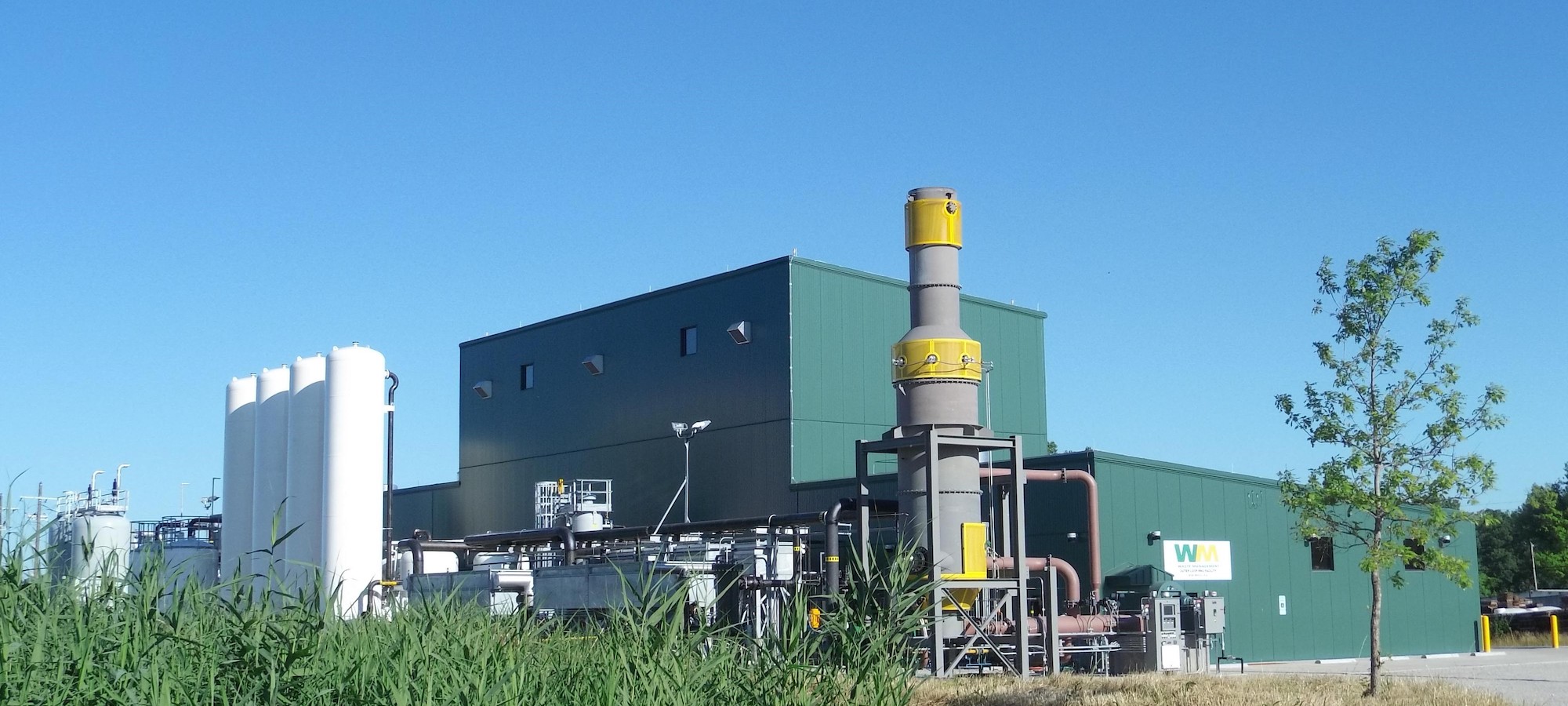Landfill gas is produced by the natural decomposition of organic waste in a landfill. Fairless Landfill uses a network of wells to collect landfill gas and control odors. The function of the landfill's gas wells is complemented by Fairless's capping system. Once installed, landfill capping improves the efficiency of the gas collection system, augments odor-control activities and prevents rain from entering the landfill where it creates wastewater.
WM’s landfill gas-to-energy projects beneficially utilize the biogas that is generated when organic material decomposes in a landfill. Use of this renewable energy as a substitute for fossil fuels reduces greenhouse gases, benefiting the community and the environment.
At the Fairless Landfill, WM proposes to construct a state-of-the-art Renewable Natural Gas (RNG) facility. The RNG facility will process biogas collected from the landfill into pipeline-quality gas for injection into the nearby commercial gas distribution network. The facility is expected to recover and distribute roughly 3 million MMBtu’s per year of renewable natural gas. The recovered gas would serve the equivalent of 65,000 households in Pennsylvania or would fuel the equivalent of approximately 2,750 heavy duty waste and recycling vehicles. Through the beneficial use and recovery of the landfill-derived biogas, more than 170,000 tons per year of carbon dioxide emissions would be avoided or reduced.
The Fairless Complex is comprised of 3 separate landfills. Currently, 3 Ultra-Low Emission (ULE) flares are used as the primary control for the landfill gas generated from the facilities. Five enclosed flares are available as back-up to the ULE flares. The Fairless RNG facility will become the preferred means of managing landfill gas collected at the complex, with excess gas controlled by one of the 3 ULE flares. The remaining 2 will be available for back-up to the RNG plant. The 5 enclosed flares at the complex will be decommissioned and taken out of service.
Project Highlights
WM will invest $90 M for the facility's construction and help create jobs for the community during both the construction and operation of the project. The completion of the facility (expected to be in 2024) will allow WM to safely decommission and eliminate 5 enclosed flares and avoid 3.4 M tons of greenhouse gas over the next 20 years. This amounts to more than 170,000 tons each year.
